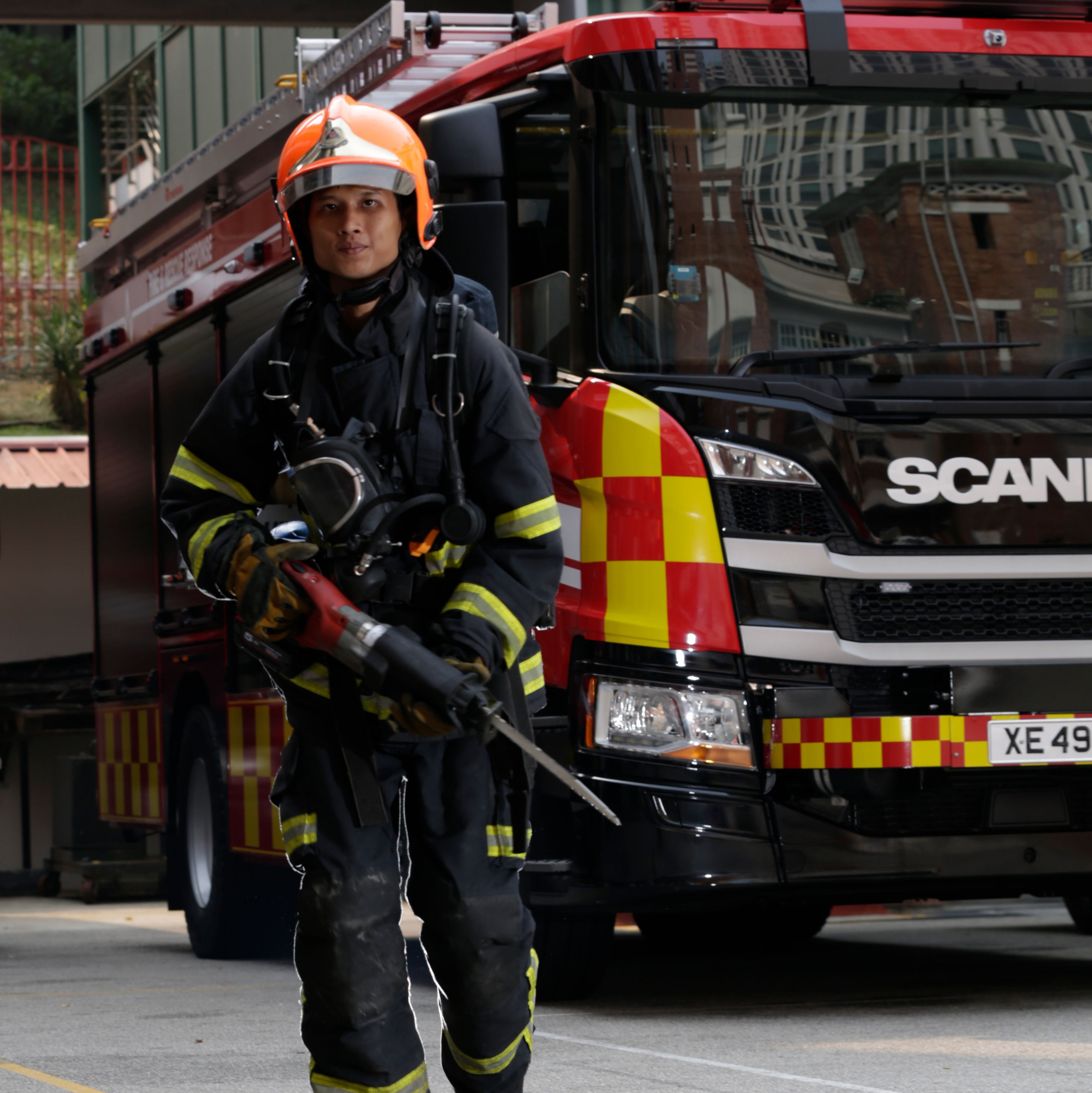
Front row from left: SSG Edil Fitri Bin Sayani (FRS EMT), SSG Sa’eid Daud Abdul Rahman (Regular EMT), SGT Puteri Aneesa Binte Amran (PRM), LCP Quah Ming Jun (NSF EMT), and WO1 Noor Azzan Bin Mohd Said (EMT Biker). Back row from left: SGT Abdul Rusydin Bin Sukiman (FRS), CPL Muhd Hanif Bin Rosmai (FF), and CPL Abdul Martin Bin Mahmood (FF).
In May 2019, the crew from Bukit Batok Fire Station was suddenly activated for an emergency call at about 6am. SSG Edil Fitri, who was part of the 8-member crew, was among the first to arrive at the incident scene.
“When we arrived, we found the patient lying on a thin mattress in her room. We had to bring the patient out into the living room so as to have the space to check her pulse and breathing,” said SSG Edil Fitri, a Fire Rescue Specialist (FRS) and an EMT, as he recalled the incident.
As there was no sign of respiration, the FRS and his fellow team members had to work together taking turns to perform CPR while the EMTs attended to the patient.
SGT Rusydin, a Fire Rescue Specialist in the crew, said that this was his first time responding to a cardiac arrest incident.
“I was quite nervous. However, with the help of my crew, we administered the high performance CPR and I performed my role according to our training,” said SGT Rusydin.
“While we were doing the fourth compression, somebody told me, “Staff, I think the patient is breathing!”, so I asked the team to stop CPR while I checked for pulse and breathing. At first, I was unsure if it was my pulse or the patient’s because the pulse felt so strong as though the patient had just finished a run.” said SSG Edil Fitri.
Moments later, the ambulance arrived and the paramedic confirmed that the patient had been successfully resuscitated and she was taken to the hospital for further medical treatment.
Reflecting on this successful case, Fitri described the overall teamwork to be akin to that of an “F1 pit crew” where the roles of each crew member were well-coordinated and synchronized when the high performance CPR was carried out.
Such synergy would not have been possible without the highly experiential training the crew received. The comprehensive and intensive SCDF training was packed with role plays and situational activities that focused on both theoretical and practical applications of high-performance CPR. Every member of the crew was trained to perform different roles with precision during an emergency.
“Being trained in high performance CPR has expanded our lifesaving skill sets. We are now not only trained in firefighting but also on how to restart a heart and save life,” said SGT Rusydin.
“Before high performance CPR was implemented, we had to do everything ourselves to save the patient. However, when every member in the crew is trained in high performance CPR, it lightens our load as we have more assistance during the rescue. In this way, we can have enough time to perform other tasks to help treat the patient,” said WO1 Azzan, an EMT-Biker.
For months after the workshop, the crew would practice the skill set for three days each week until they are very familiar with one another’s role in order to work effectively well together.
High-performance CPR is now a foundational skill that is made compulsory for all SCDF officers, including the new graduates from the Civil Defence Academy (CDA).
“Now that we are moving towards a nation of lifesavers, CPR is a very useful skill set to have to save more lives. In fact, you will never know whose life you are about to save, which could also be someone you know or even your loved one,” said SGT Rusydin.
Refer to the infographic below on how the High Performance CPR is carried out.






